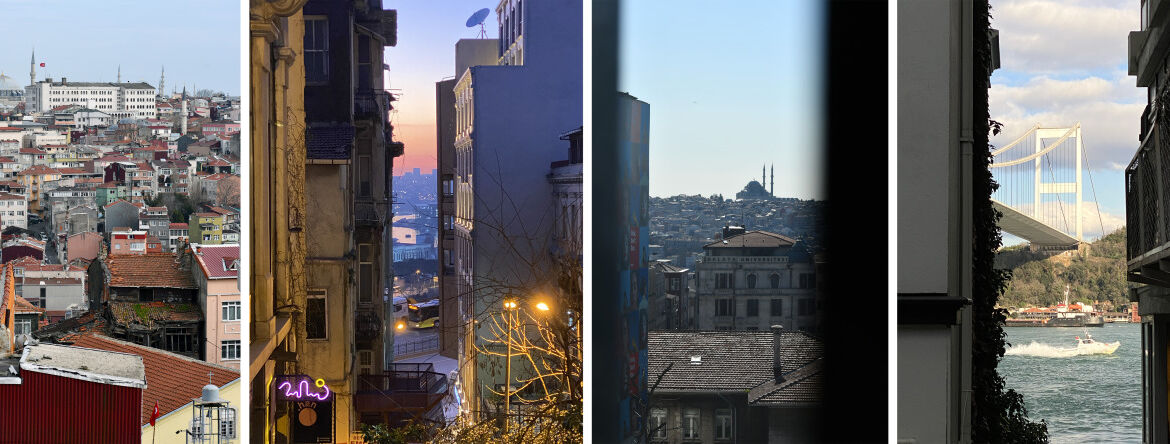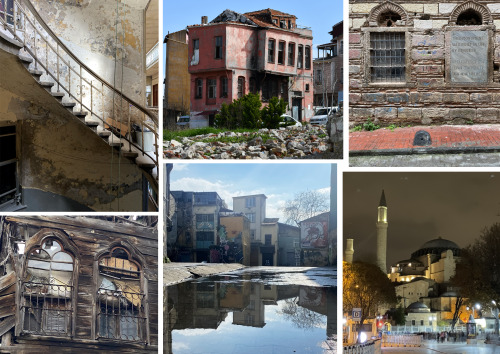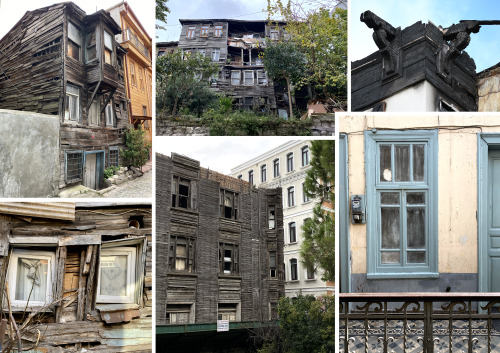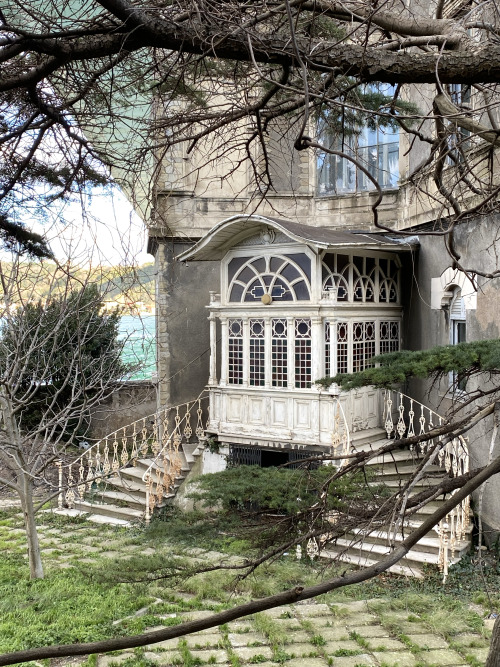
If you are a European archaeologist and you arrive in Istanbul for the very first time after having read Orhan Pamuk’s Istanbul (and having daydreamed for ages about it), you will be extremely anxious to explore every corner of the city in search of the images and feelings that the book intensely inspires.
Tons of pages about Istanbul have been written by hundreds of authors, due to its unique character as a kaleidoscopic city between two continents, with an extremely rich past made of intertwined, different cultures. Today, the city is still a melting pot of people of different cultures, languages, and nationalities arriving from every corner of the world, according to current geo-political dynamics and hordes of tourists swarming the most iconic places. Istanbul is today projected towards the future, with neighborhoods dramatically affected by profound social and urban changes, but its vibrant, picturesque atmosphere is still present at almost every corner.

The main concept of Pamuk’s autobiographical book Istanbul. Memories and the City is melancholy. The book begins with a quotation from Ahmet Rasim that is the perfect summary of the entire book: “The beauty of a landscape resides in its melancholy.” A deep feeling of melancholy and latent sadness is the fil rouge of the entire narration of Pamuk’s life in Istanbul. The “modernization” of Turkey was still in progress when the author was born in 1952 and during his childhood, spent between the districts of Nişantaşı and Cihangir: the image he depicts is that of a city inevitably suspended between old splendors and present decadence. In his account, the fall of the Ottoman Empire and the subsequent dramatic changes of Turkish society don’t seem water under the bridge but a very recent and perceivable thing.
Probably one of the most tangible effects of the social changes occurring in modern Turkey is the ubiquitous presence of building sites. On one hand, wealth, renewal, new cultural places: in Istanbul, it is common to see (with pleasure and optimism) historical palaces under restoration or recently repaired and given back to the community. On the other hand, the inexorable progress that makes the “old” vanish: today, passing by an urban void, one can imagine the previous presence of old houses that are now gone and feel that same sense of loss that young Pamuk felt when seeing that a traditional wooden house was destroyed by a fire.
But the strong fascination of the old buildings of Istanbul lies in the great number of human lives that have passed through those architectural spaces (but yes, also in the fact that they are now ruins—professional deformation). Pamuk himself explains his idea of Istanbul’s melancholy, hüzün in Turkish, which is strictly connected with the people that inhabit the city: “Now we begin to understand hüzün not as the melancholy of a solitary person but the black mood shared by millions of people together. What I am trying to explain is the hüzün of an entire city: of Istanbul.” p. 92
With this concept in mind, every corner of the city—and better if it’s in a back street, in a non-touristic neighborhood—is soon transformed into the perfect location for our hunt for the ancestral, melancholic soul of Istanbul. A hunt that is absolutely personal and subjective. So…if you have the chance to spend several months in Istanbul thanks to the ANAMED fellowship, go out and find your own vision! Your stay will soon turn into your romantic, curiosity-driven love story with the city.

“I love the overwhelming melancholy when I look at the walls of old apartment buildings and the dark surfaces of neglected, unpainted, fallen-down wooden mansions; only in Istanbul have I seen this texture, this shading. When I watch the black-and-white crowds rushing through the darkening streets of a winter’s evening, I feel a deep sense of fellowship, almost as if the night has cloaked our lives, our streets, our every belonging in a blanket of darkness, as if once we’re safe in our houses, our bedrooms, our beds, we can return to dreams of our long-gone riches, our legendary past.” p. 34–35
“The wooden mansions of my childhood and the smaller, more modest wooden houses in the city’s back streets were in a mesmerizing state of ruin. Poverty and neglect had ensured these houses were never painted, and the combination of age, dirt, and humidity slowly darkened the wood to give it that special color, that unique texture, so prevalent in the back neighborhoods that as a child I took the blackness to be original.” p. 37

“If the city speaks of defeat, destruction, deprivation, melancholy, and poverty, the Bosphorus sings of life, pleasure, and happiness. Istanbul draws its strength from the Bosphorus. But in earlier times, no one gave it much importance: They saw the Bosphorus as a waterway, a beauty spot, and, for the last two hundred years, a fine location for summer palaces.” p. 47–48

“What I enjoyed most about our family excursions to the Bosphorus was to see the traces everywhere of a sumptuous culture that had been influenced by the West without having lost its originality or vitality. To stand before the magnificent iron gates of a grand yalı bereft of its paint, to notice the sturdiness of another yalı’s moss-covered walls, to admire the shutters and fine woodwork of a third even more sumptuous yalı and to contemplate the judas trees on the hills rising high above it, to pass gardens heavily shaded by evergreens and centuries-old plane trees—even for a child, it was to know that a great civilization had stood here, and, from what they told me, people very much like us had once upon a time led a life extravagantly different from our own—leaving us who followed them feeling the poorer, weaker, and more provincial.” p. 52–53

“In The Seven Lamps of Architecture, John Ruskin devotes much of the chapter entitled “Memory” to the beauties of the picturesque, attributing the particular beauty of this sort of architecture (as opposed to that of carefully planned classical forms) to its “accidental” nature. So when he uses the word picturesque (“like a picture”) he is describing an architectural landscape that has, over time, become beautiful in a way never foreseen by its creators. For Ruskin, picturesque beauty rises out of details that emerge only after a building has been standing for hundreds of years, from the ivy, herbs, and grassy meadows that surround it, from the rocks in the distance, the clouds in the sky, and the choppy sea. So there is nothing picturesque about a new building, which demands to be seen on its own terms; it only becomes picturesque after history has endowed it with accidental beauty and granted us a fortuitous new perspective.” p. 254–55
“We might call this confused, hazy state melancholy, or perhaps we should call it by its Turkish name, hüzün, which denotes a melancholy that is communal rather than private. Offering no clarity, veiling reality instead, hüzün brings us comfort, softening the view like the condensation on a window when a teakettle has been spouting steam on a winter’s day. Steamed-up windows make me feel hüzün, and I still love getting up and walking over to those windows to trace words on them with my finger. As I shape words and figures on the steamy window, the hüzün inside me dissipates and I can relax; after I have done all my writing and drawing, I can erase it all with the back of my hand and look outside.” p. 89
————————————————————————————————————————————————————————
* All the quotations are from Orhan Pamuk, Istanbul. Memories and the city, First Vintage International Edition, New York 2006 (translated from the Turkish by Maureen Freely).
* All photographs are by the author.
Further reading on Istanbul, its daily life, and the history of its buildings:
De Amicis, Edmondo. Costantinople. 1st edition 1877. Richmond: Alma Classics, 2013.
Domaniç, Seda, and Sinan Sökmen., eds. Monday to Sunday Istanbul. Istanbul: Istanbul Tour Studio, 2022.
Farajova, Turan, and Serdar Kılıç. Istanbul Apartmanları. Hikayeleri ve Anıları ile Beyoğlu. Istanbul: Fabrika Yayıncılık, 2022.
Freely, John. Stamboul Sketches. Encounters in Old Istanbul. 1st edition 1974. Istanbul: Eland London, 2014.
Freely, Brendan and John Freely. Galata, Pera, Beyoğlu. A Biography. Istanbul: Yapı Kredi Yayınları, 2013.
Özpetek, Ferzan. İstanbul Kırmızısı. Istanbul: Can Yayınları, 2016. Available in Turkish and Italian.
Photographic books:
Pamuk, Orhan. “Foreword.”In Ara Güler’s Istanbul. London: Thames & Hudson, 2009. Turaç, Serkan. Zemheri Istanbul = Midwinter Istanbul. Istanbul: Yem Yayın, 2023.

